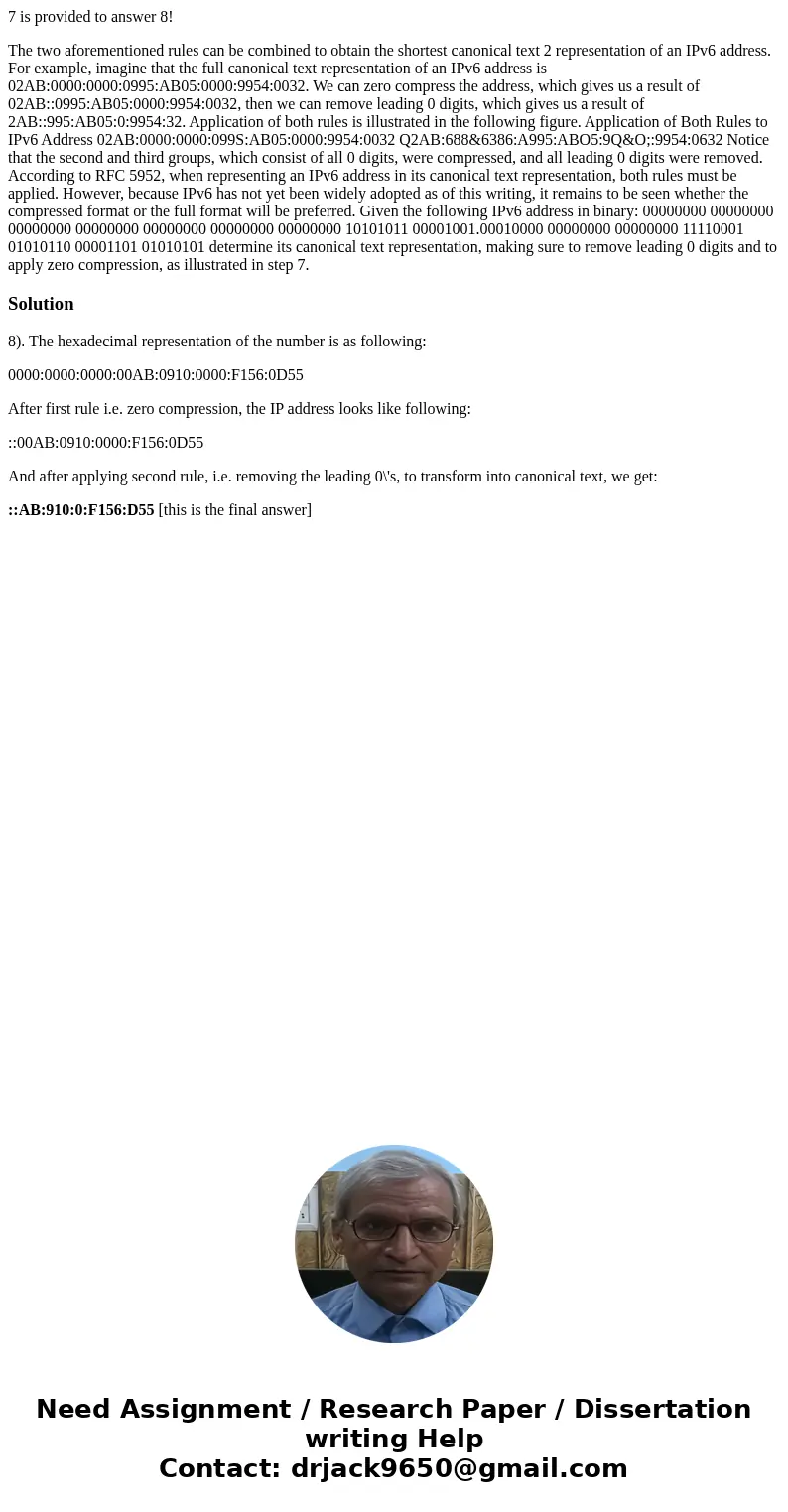7 is provided to answer 8 The two aforementioned rules can b
7 is provided to answer 8!
The two aforementioned rules can be combined to obtain the shortest canonical text 2 representation of an IPv6 address. For example, imagine that the full canonical text representation of an IPv6 address is 02AB:0000:0000:0995:AB05:0000:9954:0032. We can zero compress the address, which gives us a result of 02AB::0995:AB05:0000:9954:0032, then we can remove leading 0 digits, which gives us a result of 2AB::995:AB05:0:9954:32. Application of both rules is illustrated in the following figure. Application of Both Rules to IPv6 Address 02AB:0000:0000:099S:AB05:0000:9954:0032 Q2AB:688&6386:A995:ABO5:9Q&O;:9954:0632 Notice that the second and third groups, which consist of all 0 digits, were compressed, and all leading 0 digits were removed. According to RFC 5952, when representing an IPv6 address in its canonical text representation, both rules must be applied. However, because IPv6 has not yet been widely adopted as of this writing, it remains to be seen whether the compressed format or the full format will be preferred. Given the following IPv6 address in binary: 00000000 00000000 00000000 00000000 00000000 00000000 00000000 10101011 00001001.00010000 00000000 00000000 11110001 01010110 00001101 01010101 determine its canonical text representation, making sure to remove leading 0 digits and to apply zero compression, as illustrated in step 7.Solution
8). The hexadecimal representation of the number is as following:
0000:0000:0000:00AB:0910:0000:F156:0D55
After first rule i.e. zero compression, the IP address looks like following:
::00AB:0910:0000:F156:0D55
And after applying second rule, i.e. removing the leading 0\'s, to transform into canonical text, we get:
::AB:910:0:F156:D55 [this is the final answer]

 Homework Sourse
Homework Sourse